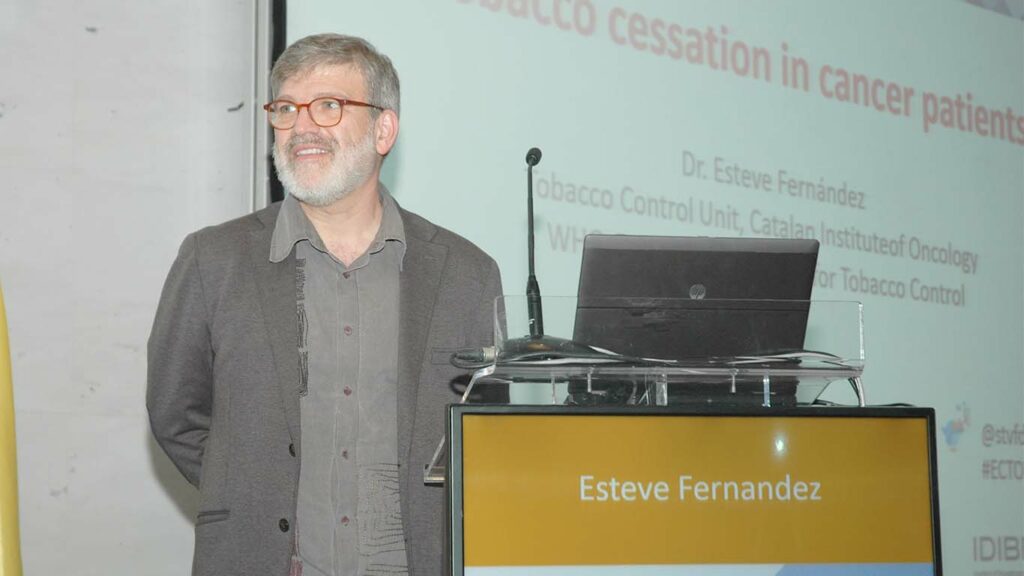Non-infectious diseases, particularly heart disease and cancer, are the leading cause of death and illness in Spain. Back pain and depression also contribute significantly to the burden of disease, especially for women. Smoking, poor diet, and being overweight are among the main risk factors and require adequate health policies. These are some of the conclusions of a study led by the collaborative group of the Study of the Global Burden of Diseases in Spain, composed of researchers from the Center for Networked Biomedical Research (CIBER), including researchers from IDIBELL and the Catalan Institute of Oncology, whose has used data from the 2019 Global Burden of Disease (GBD) report to offer a detailed portrait of health in Spain before the pandemic and make forecasts on compliance with the health goals of the Sustainable Development Goals (SDGs) in 2030.
“The objective of this study was to identify health needs in Spain, guide appropriate interventions, and provide information on future health trends,” explains Jeffrey V Lazarus, head of ISGlobal’s Health Systems research group, center Promoted by the “la Caixa” Foundation and leader of the project.
A portrait of health in Spain before the pandemic
The GBD 2019 study includes 369 diseases, injuries, and disabilities, and 87 risk factors and combinations. In 2019, almost 90% of deaths and illnesses in Spain were due to non-infectious diseases, in particular ischemic heart disease, stroke, COPD, Alzheimer’s, and lung cancer. Back pain and depression also contribute considerably to the disease burden in Spain, especially in the case of women.
The main risk factors for death and disease were smoking, high body mass index, and hyperglycemia/diabetes. “The results clearly show the influence of a sedentary lifestyle and the aging of the population,” says Joan B Soriano, senior co-author of the study and researcher in the Respiratory Diseases area of the CIBER (CIBERES) in the Pneumology Service of the Hospital Universitario de La Princesa in Madrid. Soriano also indicates: “But it is the behavioral risk factors, such as smoking and poor diet, and environmental ones such as air pollution, or the more recently added sub-optimal environmental temperature, which added a significant burden to the poor health of the Spanish population.”
Projections for 2030
The research team used 41 indicators (such as the prevalence of smoking, air pollution, intimate partner violence, and vaccination coverage) to measure Spain’s progress towards Sustainable Development Goal (SDG) number 3, which promotes healthy living and well-being for all people of all ages.
In 2019, Spain ranked 20 out of 195 countries and territories. By 2030, the country could surpass Japan, the United States, and the EU in most indicators, although those related to alcohol consumption, childhood overweight, smoking prevalence, and child sexual abuse will continue to be low.
Likewise, life expectancy in Spain is expected to reach 84.8 years (87.2 for women and 82.3 for men), although COVID-19, with its health and social repercussions, has slowed down the decline in the mortality rate.
Recommendations
“Like Europe, Spain has experienced a rapid aging of the population due to the increase in life expectancy and the decrease in mortality and fertility,” says Lazarus. To address this, it will be necessary to focus on promoting health and care for the elderly by strengthening long-term care facilities, social support services, and telemedicine.
Smoking, poor diet, and environmental factors must also be monitored. Prof. Esteve Fernández, a researcher at the Bellvitge Biomedical Research Institute (DIBELL) and the Catalan Institute of Oncology (ICO), and head of the CIBERES group warns that “in men, smoking was the main risk factor in each of the years studied; and in women, it ranked third, only behind obesity and hyperglycemia/diabetes. It is urgent to resume population measures such as reviewing the 2010 Tobacco Control Law, already obsolete in some sections, or raising the so-called Tobacco Endgame as a national priority”.
Finally, the authors point out that a major challenge in Spain is coordinating the 17 autonomous communities and the national government, and providing regional data broken down by specific groups, including migrants and the homeless. “These data will help us to assess how the 2008 financial crisis and the current COVID pandemic have influenced, and will continue to influence, Spain’s health trajectory,” the researchers conclude.
In this study led by a collaborative group of GBD researchers, researchers from ISGlobal and from various scientific areas CIBER, Respiratory Diseases (CIBERES), Mental Health (CIBERSAM), and Epidemiology and Public Health (CIBERESP) have participated; of the Catalan Institute of Oncology and Institute of Biomedical Research of Bellvitge (ICO-IDIBELL), the University of Barcelona, the Sant Joan de Déu Hospital, the Jiménez Díaz Foundation University Hospital, the Autonomous University of Madrid, the La Princesa University Hospital and the University of Washington.

